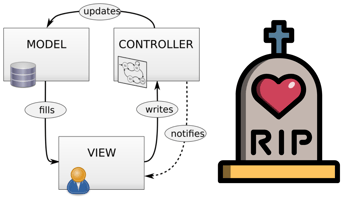The horror of horrors! I am that ancient in the land of software development. I have been messing...
Measuring Performance is about Measuring Relationships

What is the underlying focus of a KPI? It could be a telltale sign of the organization’s culture.
An article published in Harvard Business Review makes a riveting and sometimes incriminating commentary on how relationship-based goals in an organization can prevent alienation of the people most important to it, namely:
- Employees
- Customers
- Partners
- Management
In that article, Graham Kenny emphasizes that an organization’s performance measurement system should be built around its key stakeholder groups rather than merely reflecting internal programs or processes.
Using a case study of a main roads department in Australia, the article illustrates how a scorecard dominated by metrics for one stakeholder—road users—can lead to serious oversights. In the case discussed, while road safety and maintenance were well covered, critical areas such as employee engagement, local government relations, and community impacts were completely missing.
Kenny argues that an effective scorecard should measure an organization's two-way relationships with all its stakeholders. Organizations can create a balanced scorecard that reflects their strategic priorities by starting with a comprehensive list of measures for each group and then narrowing them down to the most essential KPIs.
Key Takeaways
- Stakeholder-Centric Approach
Organizations should identify their key stakeholders (customers, employees, suppliers, regulators, funding sources, and communities) and structure their performance indicators around these groups. This ensures that every vital relationship is monitored. - Balanced Metrics
It is critical to include measures for both sides of the stakeholder relationship. For example, employee-related KPIs should capture what employees expect (such as productivity and innovation) and what the organization provides (such as safety, competitive pay, and a positive work culture). - Avoiding Bias and Blind Spots
The article’s case study demonstrates that a scorecard heavily weighted toward one stakeholder (in this instance, road users) can result in neglecting others—like local government, affected communities, and employees—leading to potential underperformance and vulnerabilities. - Iterative Development Process
A recommended approach is to gather a wide range of potential metrics for each stakeholder group (as in the example, where 30 measures per group were initially identified) and then pare these down to a few key indicators. This process helps ensure that the final scorecard is both comprehensive and focused. - Measuring Relationships Equals Measuring Performance
Kenny underscores that an organization’s success is primarily determined by its relationships with its stakeholders. In other words, effective performance management means continuously assessing and improving these relationships.
References
Create KPIs That Reflect Your Strategic Priorities (Harvard Business Review)
Here was an organization with nearly 7,000 staff but none of its 29 KPIs related to employee satisfaction, safety, turnover, productivity, or innovation. This was not a good sign for the workforce, nor did it reflect positively on the way the CEO and the executive team thought about the organization.



